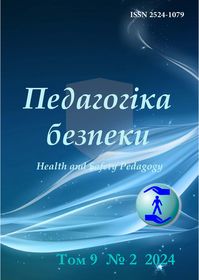Using AI in teaching physical and technical disciplines in the STEM context
DOI:
https://doi.org/10.31649/2524-1079-2024-9-2-064-069Keywords:
AI, educational process, STEM, innovative platforms, higher education students, physical and technical disciplinesAbstract
The article is devoted to the analysis of the use of artificial intelligence in teaching physical and technical disciplines in the context of STEM education. Modern tools and technologies are considered, such as virtual laboratories (Labster), computing platforms (Wolfram Alpha), adaptive learning systems (Cognitive Tutor), and deep learning models. Particular attention is paid to the advantages of AI, including personalization of learning, automation of assessment, modelling of complex physical processes, and integration of experimental data into the educational process of educational institutions of various types and profiles.
The article highlights practical cases, in particular, the use of neural networks to predict the dynamics of physical systems, the use of simulations to study optics and thermodynamics, and the supporting independent work of higher education students through interactive platforms. The advantages of AI for increasing the effectiveness of learning, developing analytical thinking in subjects of study, and forming skills for solving real technical problems are summarized.
The proposed recommendations for integrating AI into educational programs of the physical and technical profile are aimed at improving the interdisciplinary approach, expanding access to modern educational resources, and developing STEM soft skills in subjects of study.
References
Byrne, D., & Callaghan, G. (2014). Complexity theory and the social sciences. Routledge. [in English].
Chen, D., & Stroup, W. (1993). General system theory: Toward a conceptual framework for science and technology education for all. Journal of Science Education and Technology, 2(3), 447–459. URL: https://doi.org/10.1007/BF00694427 [in English].
Chen, L., Chen, P., & Lin, Z. (2020). Artificial intelligence in education: A review. IEEE Access, 8, 75264-75278. URL: https://doi.org/10.1109/ACCESS.2020.2988510 [in English].
David, Ruth A.; Nielsen, Paul. (2016). Defense Science Board Summer Study on Autonomy. URL: https://apps.dtic.mil/sti/citations/AD1017790. [in English].
Fraunhofer IKS. (2023). URL: https://www.iks.fraunhofer.de/en/publications/publications/2023.html [in English].
Holmes, W., Bialik, M., & Fadel, C. (2019). Artificial intelligence in education: Promises and implications for teaching and learning. Center for Curriculum Redesign. [in English].
Hwang, G. J., Xie, H., Wah, B. W., & Gašević, D. (2020). Vision, challenges, roles and research issues of artificial intelligence in education. Computers and Education: Artificial Intelligence, 1, 100001. https://doi.org/10.1016/j.caeai.2020.100001 [in English].
McLaren, B. M., Scheuer, O., & Mikšátko, J. (2010). Supporting collaborative learning and e-discussions using artificial intelligence techniques. International Journal of Artificial Intelligence in Education, 20(1), 1–46. https://doi.org/10.3233/JAI-2010-0001 [in English].
Rapoport, A. (1986). General system theory: Essential concepts & applications. CRC Press. [in English].
Von Bertalanffy, L. (1968). General system theory: Foundations, development, applications. George Braziller. [in English].
Xu, W., & Ouyang, F. (2022). A systematic review of AI role in the educational system based on a proposed conceptual framework. Education and Information Technologies, 27, 4195–4223. URL: https://doi.org/10.1007/s10639-021-10774-y [in English].
Xu, W., Ouyang, F. (2022). The application of AI technologies in STEM education: a systematic review from 2011 to 2021. IJ STEM Ed 9, 59. https://doi.org/10.1186/s40594-022-00377-5 [in English].
Downloads
-
PDF (Українська)
Downloads: 258



